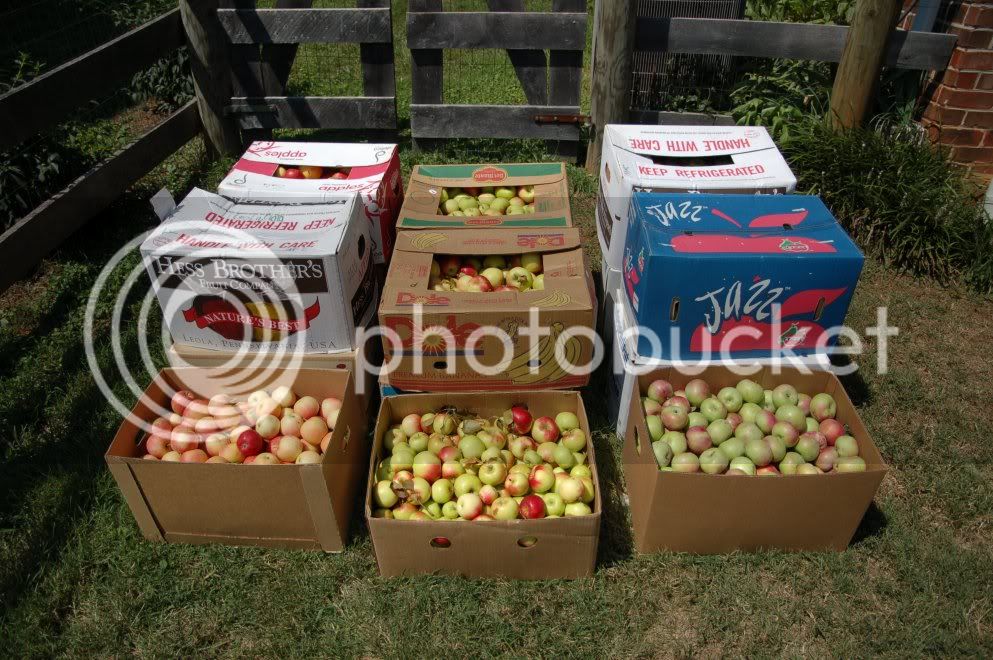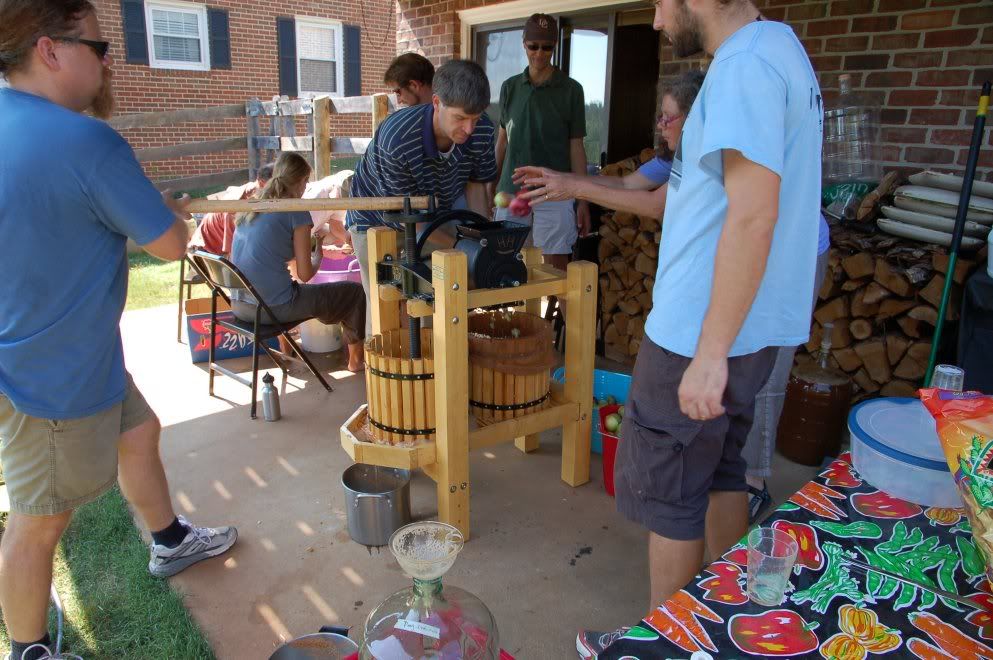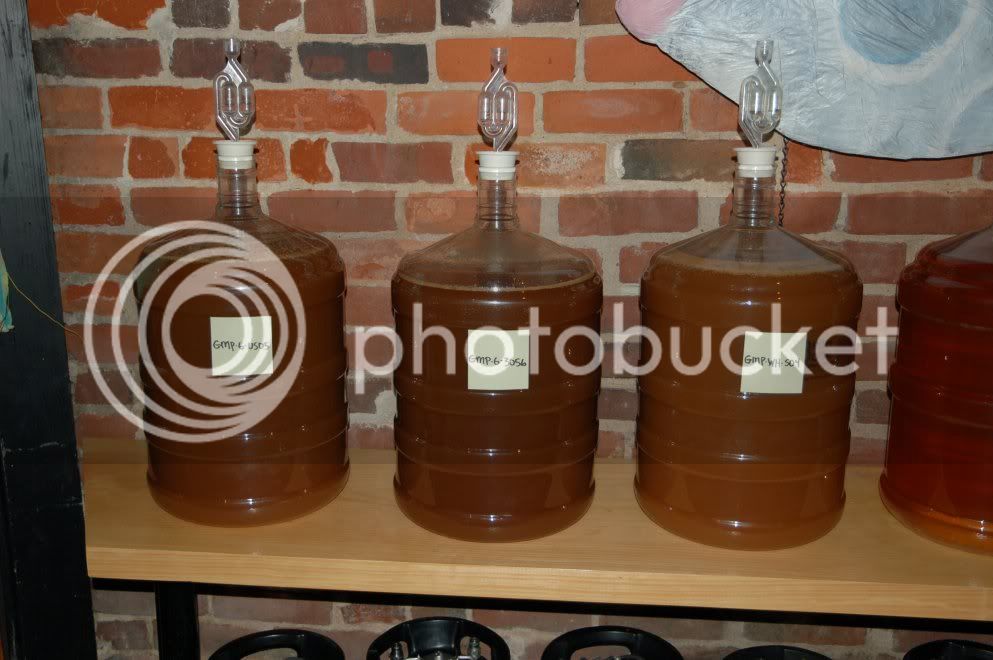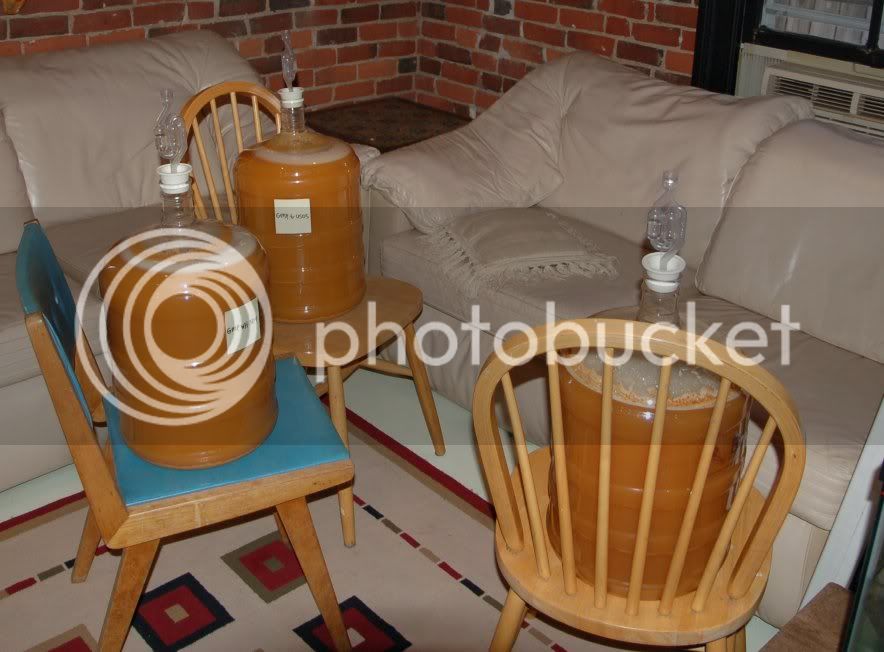JohnW - I might try calcium if I had a problem with ciders not clearing. I also saw some bentonite with calcium that might be worth checking out. So far, clearing hasnt been much of a problem for me, knock on wood. The S23 and 4184 yeasts are both resistant to crashing although they get fairly clear and these taste fairly good dry. I suspect the yeasts ball up and go dormant in the cold but dont drop. I wouldnt mind the S23 a tad sweeter - like around 1.004 so I might try calcium on that and see if it helps keep it stable after the crash.
Mainly, I just avoid the yeasts that dont clear well, For that matter, I'd like to find an alternative to both the S23 and 4184 for dry ciders. S04 does pretty good for a dry cider with a good apple finish at 1.004 and it crashes easily and is well behaved. If you look at the pics on pages 31 and 26, most of the bottles are fairly clear. A couple of the malt ciders on page 26 are real cloudy as were one or two of the one on page 31. I try to avoid the yeasts that dont clear well rather than add an extra step to get them to clear.
I had a batch of juice that was Stayman and Rome and that didnt clear very well, so I try to avoid Romes. They taste great, but they are mostly an applesauce apple because of the pectin. If that was all I could get then fining might be an issue. This year, just about all of the batches I did came out pretty clear except for one batch that I hand pressed with some friends and fermented a carboy with S04. I also fermented a carboy with wild yeast on the same juice, and it came out pretty clear, but for some reason the S04 batch was cloudy. But it still tasted great and when you put it in a pint glass no one can tell that you cant see through a 5 gall carboy.
Unpasteurized juice clears much better than pasteurized.
When I started doing these experiments it was a few years ago and my goal was to have about 4-5 good recipes instead of one (ie Nottingham crashed at 1.008 to 1.012). I've been making cider for a long time with the same recipe, which was like a slightly drier version of a standard commercial cider - eg Woodchuck, Original Sin, Strongbow, etc. So now I have a much wider range, some of which is sweeter, some drier. My girlfriend and a lot of her friends like it sweet so that is a definite factor
One of the characteristics of a perfect cider yeast IMHO would be one that only had an alcohol tolerance that was in the range of 5 to 8 percent (preferably available in half percent steps eg 6.5, 7,0 etc. That would save the cold crashing step and make bottle carbonating reliable as long as someone can use a hydrometer properly.
Otherwise I'd say it would be hard to define a perfect cider yeast for the same reasons it would be hard to define a perfect beer or wine yeast because there are so many styles. I've got about a dozen recipes now that I'm fairly happy with and they range from dry to sweet. I'm doing 8 batches at a time, so I have more recipes than juice now.
Next season, I plan on making 34 keg batches, consisting of four commercial pressings of 8 batches each, plus 2 batches hand pressed.
For each batch of 8 kegs, 4 of them will most likely be the same yeasts for every batch:
Nottingham - tastes great and half the price of Fermentis. target fg 1.008-1.012
S04 - tastes great, easy to work with, can go drier than the Notty and still keep more of the apple flavor. target fg. 1.004-1.010
US05 – mostly with turbinado, but I might do another one with malt, target fg for both 1.012.
S04 or US05, adding raspberries before the cold crash. This method worked out pretty well. My favorite yeast for adding raspberries so far is US05, but S04 is good and I might try some more of the wheat yeasts.
Then of the remaining 4 kegs per batch, two will be sweeter style wheat yeast batches from following list (one regular, one cyser), which I'm planning to rotate through:
Wyeast 3068 Weihenstephan Wheat. target fg. 1.016-1.022
Wyeast 1010 American Wheat Yeast. target fg. 1.012-1.020
Wyeast 3638 Bavarian Wheat Yeast. target fg. 1.012-1.020
Wyeast 3333 German Wheat Yeast. target fg. 1.012-1.020
Wyeast 3056 Bavarian Blend target fg. 1.016-1.020
WLP380 Hefeweizen IV with turbinado target fg. 1.016-1.020
The remaining two kegs per batch will be drier pub style ciders and come from following list
WLP005 British Ale Yeast. target fg 1.006-1.012
Brupaks Ale yeast. target fg 1.008-1.012
Wyeast 2001 Pilsner Urquell. target fg 1.008-1.012.
Ritchies Real ale yeast. target fg 1.008-1.012
Ritchies Real lager yeast. target fg 1.008-1.012
Gervin English Ale yeast. target fg 1.008-1.012
Youngs Lager yeast. target fg 1.008-1.012
Youngs Ale yeast. target fg 1.008-1.012
S23 Lager Yeast?. target fg 1.002-1.004
Even though I already have more recipes than I can make at once, there are still a few more yeasts that I want to check out, so I'm planning to do some small batches of the following as well. If they come out well, then they might make it into the keg list rotation for some of the last batches:
Wyeast 1084 Irish Ale Yeast.
Wyeast 1098 British Ale Yeast
Wyeast 1272 American Ale Yeast II
WLP023 Burton Ale Yeast
WLP028 Edinburgh Scottish Ale.
WLP041 Pacific Ale
WLP810 San Francisco Lager
Wyeast 2035 American Lager
Wyeast 2112 California Lager
Wyeast 2206 Bavarian Lager
Wyeast 1728 Scottish Ale
White Labs WLP800 Pilsner Lager
I'd be interested in hearing any feedback on these or other good cider yeasts.








![Craft A Brew - Safale BE-256 Yeast - Fermentis - Belgian Ale Dry Yeast - For Belgian & Strong Ales - Ingredients for Home Brewing - Beer Making Supplies - [3 Pack]](https://m.media-amazon.com/images/I/51bcKEwQmWL._SL500_.jpg)










































